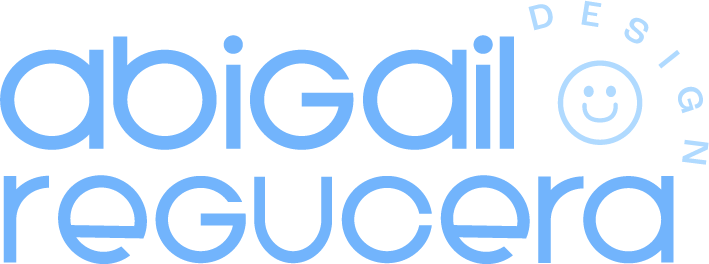From Customer Avatars to Colour Psychology
For any creative person or business person, the audience completes the reason why we do what we do. Without a target audience, our work would exist for no one.
In a lot of my blog posts, I mention creating your brand and its relevant marketing strategy for your ideal audience. In this blog post, I want to simplify that idea of an audience further, to an individualistic level.
The foundation of most business development plans, marketing efforts, and brand messaging is built on a collection of personas. Personas are customer profiles that are based on your real-life customers. What if I told you could get incredibly creative with this?
Welcome to your ideal client avatar (ICA)
If you're probably thinking "I already have my customer personas pegged down, do I need an ICA as well?" Yes, you do. The ideal client avatar is more detailed than your customer persona. Customer personas are based on current market research and broadly relate to more than one person. For example, one customer persona could encapsulate a range of people. Whereas with an ideal customer avatar, it's based on one person—your one and only ideal client.
So do you get wildly imaginative when building your ICA?
Yes and no.
You ICA is still based on research but makes no assumptions, as you would sometimes have to do with personas. ICA profiles are in-depth, to a point where you can pin down the exact thought you want your ICA to think when they learn about your business. Your ICA is someone whose circumstances, income, and preferences are the perfect match for what your brand and business offer.
As web designer, graphic designer and brand consultant, I centre my work around human experiences. While I can run wild with creativity, it means nothing if my marketing strategy cannot appeal to the ICA of the brand I am working on. I like to think of my work in graphic design as being the bridge that links customer intent to strategic brand identity using colour psychology.
Build your Ideal Customer Avatar (ICA)
Creating your ICA is similar to creating your customer personas. You start with the usual demographic stats—age, location, occupation, preferences, income, living situation, etc.
The information you have about your customer persona (which is based on a group of people) helps you build a fictional avatar (if you've played video games, you'll get where I'm going with this) who has all these traits. There's no room for assumptions or suppositions.
You then give your ICA a name. Let's pretend your ICA is named Danielle.
Now whenever you're faced with a decision about your products or services (say attaching more features for a higher price, or allow the customer to choose add-ons), you now ask yourself, 'What would Danielle like?'. And bam, that decision just got easier to make.
Find your Goldilocks number
Of course, you're not limited to just one ICA. If you cater to clients ranging across different demographics, you can build an ICA for each group. However, if you're counting your ICAs on all your fingers and toes, you need to scale it down. You won't gain clarity of the market by increasing your list of ICAs.
We want to fix on a certain number of ICA that's just right.
You don't need to have all your ICAs pinned down in one go, you can build one or two ICAs, get a better understanding of them, and build a strategy exclusively for those audiences. Then move on to making your third ICA.
Though your intent is to attract customers from a wide audience, it begins with narrowing it down first.
The ICA is in the details
The main differentiator between a customer persona and an ICA is the details.
With an ICA, you have lots of them.
With a customer persona, you may find out that about 80% of your potential clients hang out on certain social media channels. But with an ICA, you know which exact social media pages they follow. Once you know what pages they follow, and the type of content they engage with, you can come up content ideas that appeal to them. This helps you get a better understanding of who you're talking to on the other side of your website or social media page.
As you build your ICA, you can base it on deep market research.
If you know which of the latest movies your ICA is interested in, you can make a reference to it in your email newsletter or a social media post.
The bridge between customer avatars and colour psychology
Now, let me tell you how knowing your ICA can influence more than just your digital marketing strategy, and extend to your branding.
I used to think I'd study psychology and work as an art therapist.
Instead, I'm a visual designer who accounts for human responses to colours and shapes to create brand assets. So I guess I'm an art therapist for small and medium sized businesses?
Colour Psychology 101
Working with colours is an art... and a science.
Colour Psychology is using colours to elicit a certain behviour or response. Up to 85% of consumers choose a product because of its colour. If you like soothing shades of colour, have you ever seen a SMEG appliance and not wanted one? In this way, people reach subconscious decisions about a brand, the catalyst being the colour of a logo design or packaging design.
If you have an ICA pegged down, it doesn't mean you choose their top three favourite colours and plug them into your visual brand design. Once you know what their attitudes and aspirations are, you use colours that speak to those facets of their personality.
Colour your brand strategy better
The range of colours that designers work with goes beyond a set of markers or coloured pencils. Like coins, colours have two sides to them. For instance, yellow is thought to be a cheerful colour and stirs up optimism (think stress balls), however babies tend to cry more in yellow rooms.
We use the same dual implications in language. We use the term 'blue sky' in business to refer to unrestrained optimism and potential, but we also say we're 'feeling blue' when we're down.
Those of us working in graphic design use shades, tints, and tones to make one colour evoke a range of emotions in the viewer. But of course, emotion can be in the eye of the beholder, the colours that work for one ICA may not have the same effect on another ICA.
The difference in perception could be cultural and behavioural.
Knowing your ICA down to the details can offer insights into which colours work best for that specific ICA. This helps you plan your brand identity design for various marketing materials.



